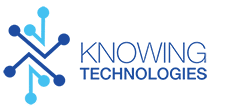[vc_row type=”in_container” scene_position=”center” text_color=”dark” text_align=”left” overlay_strength=”0.3″][vc_column column_padding=”no-extra-padding” column_padding_position=”all” background_color_opacity=”1″ background_hover_color_opacity=”1″ width=”1/1″][vc_column_text]The verdict is in: technology holds an important place in the classroom and can have transformative effects on schools, students, and teachers. However, without a thoughtful and intentional approach to implementation, schools can create problems that could otherwise be avoided.
Recognizing the value of technology for student and institutional success, some schools have made rash decisions to bring tech into schools. In numerous well-known cases, administrators have gone all in on technology but lacked the planning and vision for sensible implementation. A “ta-da” moment of unveiling technology (but only the devices) is what some regard as the dreaded device drop. Famously, the LA Unified School District committed to purchasing 700,000 iPads to students and teachers with minimal planning and vision prior to rollout. With sums of critical tax dollars spent, lacking teacher training, glitches, and software issues created chaos, legal problems, and in the end, a costly endeavor without reward.
With an intentional approach to device purchases and effective, long-term professional development to support implementation, a school can bring innovation and growth without being derailed by unnecessary obstacles.
We believe that taking the following steps will lead to successful implementation and avoid the dreaded device drop:
1. Start by looking at the mission and vision of your school and technology department before making big technology purchases.
Technology is not the end but rather the means to the end, and the mission and vision of your school are the ends that technology should support. There have been plenty of stories about schools and even districts that have jumped on a technology trend without first determining how that device or product might benefit existing educational objectives. Purchasing devices for the sake of having them could lead a school astray, but bringing in technology to advance existing goals can be transformative.
2. Involve teachers in the discussion about devices and how technology can help support curriculum.
Since teachers are experts on what works and doesn’t work in the classroom, it’s critical to consult with them and gain their insights. By involving teachers in the discussion, teachers feel heard and administrators can make informed decisions moving forward.
3. Plan for long-term professional development.
Like any community, teachers are a diverse group of people with a range of experiences, views, and preferences. Long-term, well constructed professional development allows all teachers the opportunity to grow alongside the technology program and not get left behind. With this support, teachers will quickly be able to see how their students will benefit from the addition of technology into their curriculum.
If your school:
• is looking to align your technology decisions with the school’s mission and vision
• needs additional advice on device purchasing or technology integration strategies
• is ready to initiate a transformative professional development program focused on technology integration
We can help! Contact us at info@knowing-tech.flywheelsites.com to learn more about our transformative partnerships with schools.[/vc_column_text][/vc_column][/vc_row]




